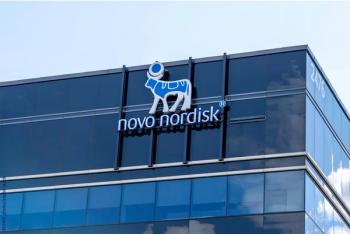
Older Patients Advised to March to a Fast Drummer
MATSUMOTO, Japan -- Among patients in their 60s and older, fast walking is better than moderate strolling to improve systolic blood pressure and flexibility, researchers here have found.
MATSUMOTO, Japan, July 12 -- Among patients in their 60s and older, fast walking is better than strolling to improve systolic blood pressure and flexibility, researchers here have found.
In a study of moderate- or high-intensity walking in men and women in their 60s, compared with no walking, those who moved along more rapidly did best, reported Hiroshi Nose, M.D., Ph.D., of Shinshu University Graduate School of Medicine, and colleagues, in the July issue of Mayo Clinic Proceedings.
Those who walked most rapidly, rather than at a moderate pace, or not at all, developed better flexibility and aerobic capacity, and had greater reductions in systolic blood pressure, they found.
"High-intensity interval walking training might help protect against age-associated reductions in muscle strength and peak aerobic capacity peak and increases in blood pressure. Guidelines for exercise in healthy older adults should encourage at least some higher-intensity component during walking," the investigators wrote in the July issue of Mayo Clinic Proceedings.
The study also supported the idea that even moderate-intensity walking can improve health in a population of older adults, commented James Levine, M.D., Ph.D., an obesity specialist at the Mayo Clinic in Rochester, Minn., in an accompanying editorial. "Emphasis is moving away from intermittent sweat-drenched bouts of arduous exercise to more frequent walking, whether in the park, at work, or at home," he wrote.
Dr. Nose and colleagues conducted a study to determine whether walking training at more than 70% of maximal intensity would result in greater increases in thigh muscle strength and peak aerobic pressure and decreases in resting blood pressure compared with moderate-intensity walking.
They investigators enrolled 60 men and 186 women with a mean age of 63 + 6 and randomized them to three groups.
The moderate-intensity walkers were told to walk at approximately 50% of their peak aerobic capacity and to use a pedometer to verify that they took 8,000 steps or more per day for at least four days each week.
The high-intensity interval walkers were monitored by accelerometry, and were instructed to repeat five or more sets of three-minute low-intensity walking to about 40% of peak aerobic capacity. The low-intensity walking was followed by a three-minute high-intensity walk to greater than 70% of peak aerobic capacity, and this too was to be performed for four or more days each week.
The investigators measured isometric knee extension and flexion forces, peak aerobic capacity for cycling, and peak aerobic capacity for walking both at baseline and after training.
They found that in the high-intensity walkers, there was a 13% increase in isometric knee extension, 17% improvement in isometric knee flexion, 8% boost in peak aerobic capacity for cycling, and 9% rise in peak aerobic capacity for walking by 9% ( P for all
Dr. Nose and colleagues noted that their study was limited by the use of different monitoring systems for the walking training groups, more frequent visits to the center by the high-intensity walkers, and by the fact that 17% to 30% of respondents did not return to the center for physical testing after training.
Newsletter
Enhance your clinical practice with the Patient Care newsletter, offering the latest evidence-based guidelines, diagnostic insights, and treatment strategies for primary care physicians.




